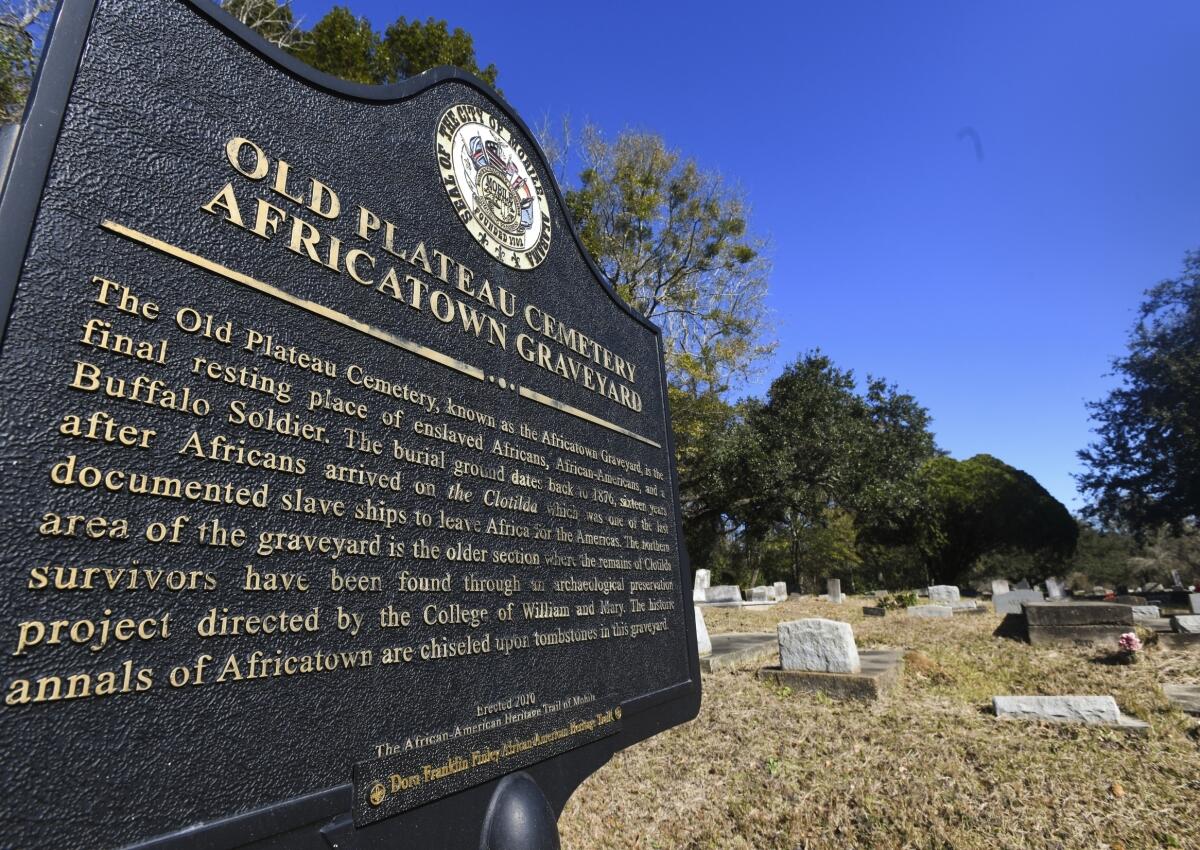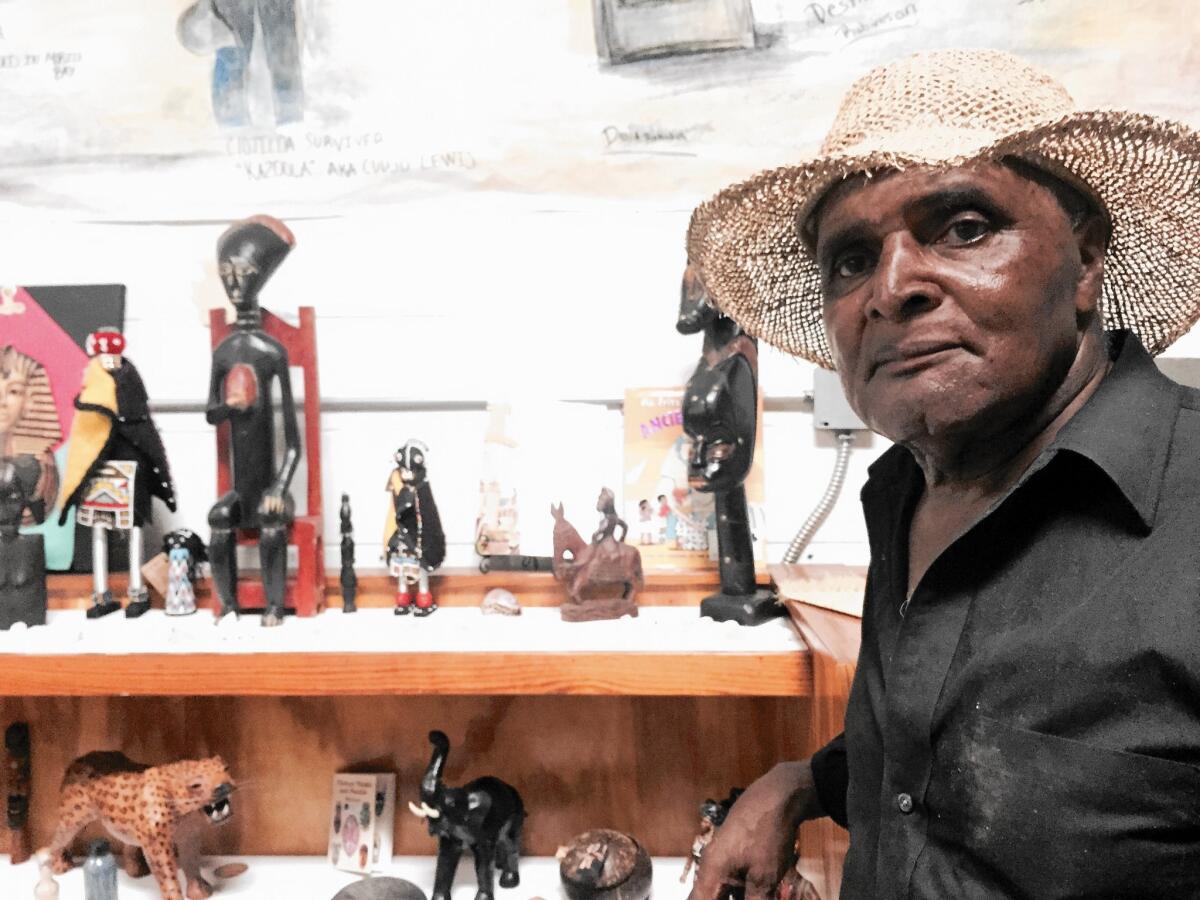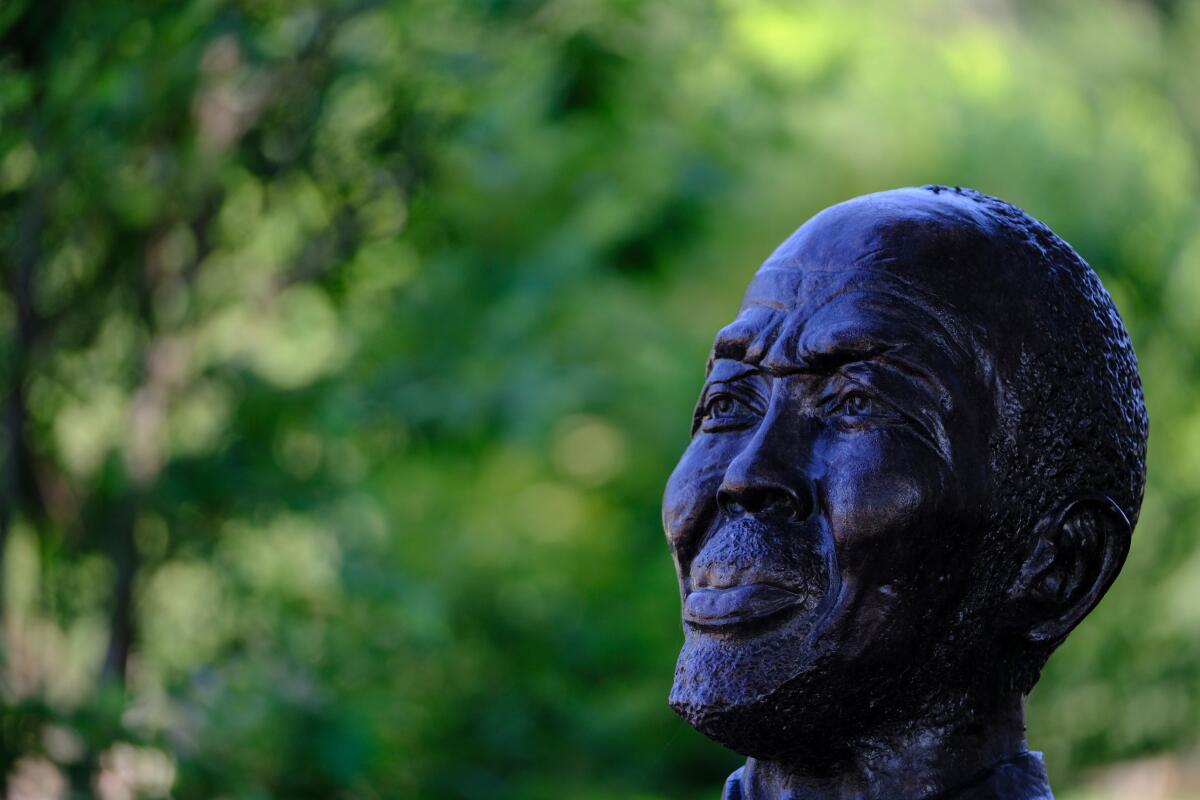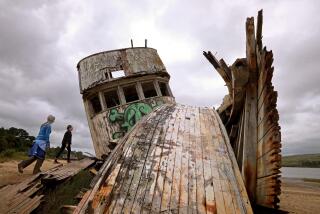Op-Ed: The Clotilda is the only American slave ship ever found. It needs to be preserved.

- Share via
The wreck of the Clotilda, the last ship to transport enslaved Africans to the United States, sits entombed in mud at the bottom of the Mobile River in Alabama. It is the only ship from the American slave trade ever found. In fact, out of more than 20,000 vessels that participated in the global slave trade, only 13, counting the Clotilda, have been found.
I found the Clotilda in April 2018 with a team from the University of Southern Mississippi, though the discovery was not announced publicly until this May. The ship is an artifact of international historical significance. But I worry that my home state of Alabama — which owns the wreck and will control what happens to it going forward — could squander the opportunities presented by the ship, either because of financial challenges or a failure to understand its importance. We cannot let that happen. Protecting and preserving it should be an immediate national priority. If our divided and dysfunctional Congress is too crippled to act, then the private sector must rally around to save the Clotilda.
The discovery of the Clotilda presents a one-of-a-kind opportunity to bring to life the nation’s slave-era history. It can also help highlight the story of Africatown, the only community in the nation founded and ruled by African-born slaves, where many of the Clotilda captives lived out their days and where their descendants reside.
The Africatown story is one of exceptional resilience. The 110 captives on the Clotilda were kidnapped by the king of Dahomey, who ruled what is modern-day Benin in West Africa and ran a brisk business selling his fellow Africans into bondage. These Africans, captured from various tribes by the Dahomean army, were sold and brought to Alabama by Timothy Meaher, a plantation and steamboat owner in Mobile. Meaher had bet a Northerner on his steamer that he could sneak Africans into the country as slaves, even though it had been illegal to import slaves to the United States since 1808. He sent the Clotilda to Africa in 1860 with $9,000 in gold (about $185,000 in today’s dollars) and orders to bring back slaves. Meaher was by no means the only person illegally importing slaves. Several other slave ships did the same in the year before the Clotilda’s voyage. Their captains were hailed as heroes in newspapers around the South.
When the Clotilda arrived in Mobile, Meaher and his compatriots burned and sank the ship to cover up the crime. They split the group of men, women and children among their various plantations. Ultimately, the captives were freed five years after they were enslaved, thanks to the end of the Civil War. A group of them asked Meaher to pay for passage back to Africa. After he refused, they appealed to the U.S. government, again to no avail. Ultimately, some members of the group bought a small piece of land north of Mobile from Meaher and created a community called African Town, later Africatown. They spoke their native tongue, farmed using traditional African methods and ran their own school. That school is still educating students in Africatown today.

The existence of the Clotilda is proof that a story told around dinner tables in Africatown for 150 years is true. Here in Mobile, people routinely dismissed Africatown’s Clotilda-based origin story as myth, something the community made up. When I decided to look for the Clotilda two years ago, it was because no one else was doing so and it seemed a mystery in need of solving. The elation and international attention that greeted the discovery prove the ship has already become a cultural touchstone. Now it falls to us to protect it.
Here in Alabama, there have been calls to leave the ship in place underwater along the remote and swampy shores of the Mobile River where it was burned to the waterline and sunk in 1860 — a sort of Pearl Harbor-inspired memorial. Others have suggested putting what’s left of the ship — which includes the hold where the captives spent their seven-week journey, naked and chained in filth — in a struggling maritime museum in Mobile next to a Carnival cruise ship terminal. A Civil War reenactor told me the ship should be blown up and crushed to dust, disappeared in the same fashion as his beloved Confederate monuments across the South (though not in Alabama, where an 88-foot tall monument to Confederate soldiers still dominates the grounds of the state Capitol).
The obvious answer seems to be to free the Clotilda from its cocoon of mud and put it on display in a museum in Africatown, which is what the residents of Africatown support. Of course, some Clotilda artifacts should also find their way to the Smithsonian’s National Museum of African American History and Culture, to tell the story on a national level. But the ship should remain in Africatown.

“We want it dug up and placed on display in the community,” said Pastor Christopher Williams Sr. of Yorktown Missionary Baptist Church, one of Africatown’s largest congregations. “This history is important not only in the black man’s heart, but in hearts all over the world. Everyone wants to hear Africatown’s story.”
Fortuitously, Africatown, which is on the National Register of Historic Places, received about $4 million out of BP oil spill settlement money to build a museum and welcome center a few months before the Clotilda was found, providing a perfect home for the ship. It is located adjacent to the cemetery where many of the Clotilda captives are buried. The ship would serve as a much-needed source of economic revitalization for Africatown and could instantly become part of the Alabama Civil Rights Trail, which highlights critical places in the African American story, such as the 16th Street Baptist Church and the Edmund Pettus Bridge.
Raising the ship and restoring it for display will be painstaking work and probably cost tens of millions of dollars. Alabama doesn’t have the money for such a task. State agencies, such as the Department of Environmental Management, perpetually rank last among all states in funding dollars. Even with the best intentions, it will be nearly impossible to find adequate support or money in Montgomery — a former capital of the Confederacy — to preserve this relic of the slavery era.
But we needn’t rely on Alabama alone to preserve the ship. It’s time to ask the nation to take on the task and finance the effort to wrest it from the river mud. I believe many around the country and the world will support this mission when they understand what it represents for Africatown and our shared history.
The saga of the Clotilda and its enslaved passengers, from the illicit journey on the eve of the Civil War to the creation of the nation’s first community founded and governed by Africans, cuts to the heart of the American story. It is a tale of tragedy and survival, one that highlights our close and living connection to America’s slavery past. Alabama has too often been on the wrong side of this history. Now, it falls to the rest of the nation to ensure that Alabama does not miss this moment to preserve the Clotilda and this chapter of American history.
Ben Raines, an Alabama native, is a journalist, filmmaker and author of a forthcoming book on the discovery of the Clotilda.
More to Read
A cure for the common opinion
Get thought-provoking perspectives with our weekly newsletter.
You may occasionally receive promotional content from the Los Angeles Times.










